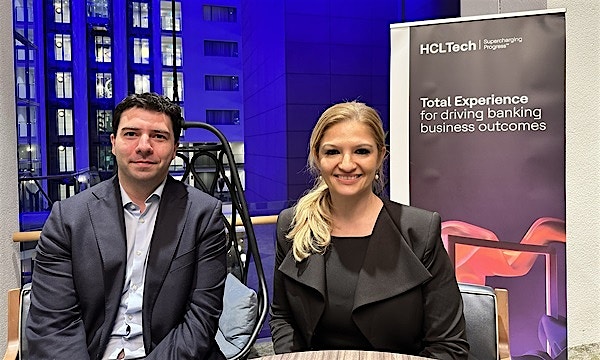In today's highly competitive financial services landscape, organizations are prioritizing total experience (TX) to capture market share and provide a seamless journey for both employees and customers.
In financial services, “TX extends beyond just digital touchpoints, encompassing physical touchpoints, kiosks, walk-in banking and online portfolios.” said Hannah Byrne, SVP, Digital Business Services at HCLTech during Adobe Summit.
Financial services organizations recognize the need to offer a complete and frictionless journey that can be accessed anytime, anywhere and across various channels.
Embracing Total Experience to gain a competitive edge
The financial services industry is fiercely competitive, with organizations striving to attract and retain consumers in a market filled with choices.
Consumer decisions in banking are crucial and organizations are realizing the importance of providing a Total Experience that is as frictionless as possible. This entails facilitating easy access to various touchpoints, whether digital or in-person, day or night. By offering a comprehensive and seamless experience, financial services providers aim to stand out from the competition and create a loyal customer base.
The significance of employee experience in Total Experience
Recent global research conducted by HCLTech reveals that 41% of financial services organizations are prioritizing employee experience as part of their overall TX strategy. This emphasis on employee experience stems from the understanding that employees directly impact the customer experience. A positive and engaging employee experience translates into a better customer experience. Enterprises have recognized this trend, particularly in the post-COVID era and are taking measures to ensure employee satisfaction.
“Imagine yourself as a consumer interacting with any product or service. You undoubtedly expect a good experience with the individuals you interact with, whether it's in a physical branch or during a call with a customer service representative. The employee experience is conveyed to the consumer during these interactions. Enterprises have seen this as a vital trend over the past couple of years, post-COVID and have doubled down on efforts to prioritize employee satisfaction,” said Byrne.
When employee experience is high, it translates into a better customer experience. Organizations are increasingly investing in employee well-being and engagement, recognizing the direct correlation between employee satisfaction and customer satisfaction.
Prioritizing AI
Implementing a total experience strategy in the financial services industry comes with its unique set of challenges and considerations. Organizations need to ensure that their total experience strategy aligns with complex regulatory frameworks while leveraging technologies such as artificial intelligence (AI).
Large financial institutions have already dedicated resources to developing AI plans and identifying use cases aligned with the customer journey.
“Aligning AI use cases with the customer journey is a top focus for financial services organizations to ensure they deliver the best outcome for the customer and employee, as well as the return on investment,” said Byrne.
Data and analytics also play a crucial role in driving the cohesive implementation of a seamless experience.
While the financial services industry is making strides toward implementing TX strategies, it is essential to recognize that this journey is only at its beginning stages. Financial institutions are still grappling with the sheer volume of use cases and are working toward managing them effectively.
“Risk and compliance-related use cases are gaining prominence, assisting in predicting assistance requirements in areas such as wealth management or different lines of business,” added Byrne.
The rise of FinTech
The financial services industry will witness accelerated developments at the intersection of FinTech, traditional financial services and Total Experience. There is a growing trend of merging FinTech products into the broader banking system. This integration will not only enable institutions to leverage the speed to market but also enhance the overall customer experience.
“This integration will increase over the next 12 to 18 months at a relatively rapid rate, especially after the US Presidential election in the fall,” said Byrne.
Looking ahead: An experience-led industry
Overall, the financial services industry is undergoing a transformative journey as organizations embrace total experience to differentiate themselves in a crowded market. This holistic approach ensures a seamless journey for users at every touchpoint, while also recognizing the pivotal role that employee experience plays in delivering exceptional service.
By prioritizing employee satisfaction and aligning it with the customer experience, financial services organizations have realized the potential to gain a competitive edge. Additionally, navigating challenges such as regulatory compliance through AI-driven strategies and leveraging data analytics allows organizations to optimize their Total Experience initiatives.
As the industry evolves and embraces FinTech advancements, financial services providers can anticipate continued growth and innovation.
The commitment to Total Experience paves the way for organizations to excel in meeting customer needs, creating lasting relationships and driving success in the future of the financial services industry.






